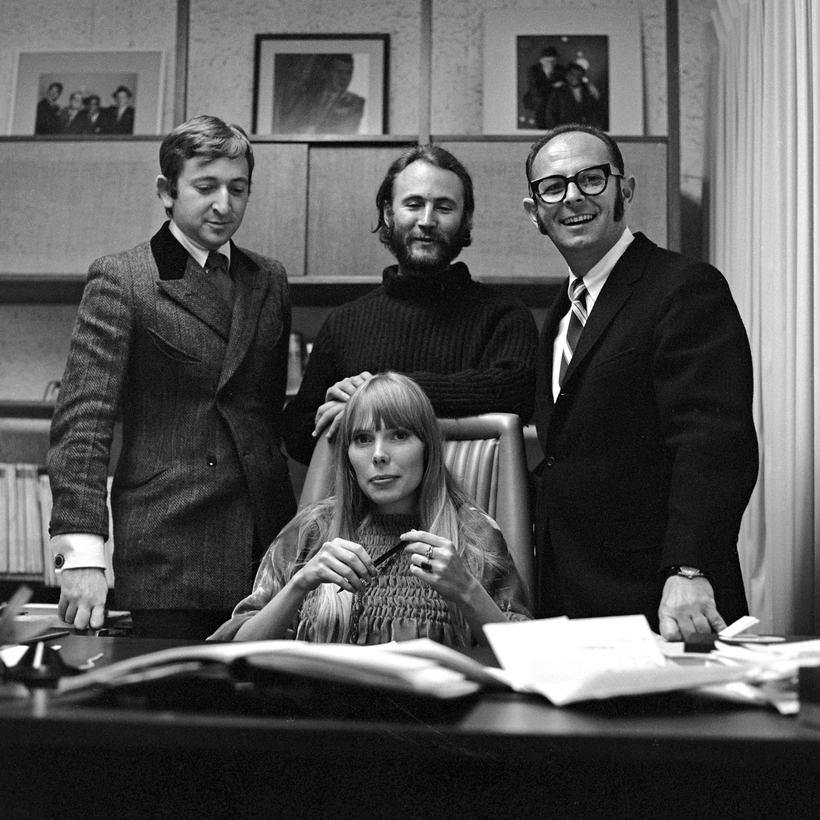One afternoon in 1967, Mo Ostin, an ascendant executive at what was then called Warner/Reprise Records, told his staff to quit doing what they had always been told was the most important part of their jobs. “We need to stop trying to make hit records,” he said. “Let’s just make good records and turn those into hits.”
Liberated from the strictures of AM radio, the company veered from the middle of the road into the hairy, scary wilderness of the hippie counterculture. By the end of the year, its artist roster included Jimi Hendrix, the Grateful Dead, Van Dyke Parks, Randy Newman, and the radical art band the Fugs. None of them sounded anything like the acts in the Top 40, but that was the point.
That’s also why it took less than 4 years for Warner/Reprise to become the hottest record label in America, and why it stayed at the front of the pack for most of the next 30 years. Not because Ostin was willing to do anything to make as much money as quickly as possible, but because he was idealistic enough to think that doing the opposite would lead to better music and, in the long run, better profits.
“Let’s just make good records and turn those into hits.”
Instead of forcing his artists to bend to corporate expectations, Ostin put the music first, allowing his musicians to spend as much time in the recording studio as they pleased, then supporting them even if their first album, or first few albums, didn’t sell enough copies to cover the expenses. He also stocked his offices with young folks who were far more familiar with the music than the music industry was, then directed them to ignore standard operating procedures because, as he liked to say, “Why do it their way?”

Warner Bros. Records did virtually everything an ordinary record company wouldn’t. Advertising chief Stan Cornyn, a liner-note writer hired in part for his hatred of advertising, crafted funny pieces that were the opposite of the usual hard sell. (For Randy Newman’s first album: “Once you get used to it, his voice is really something.”) They became so popular he began to receive fan mail. Ostin encouraged his staffers to be as creative and take as many risks as the artists. Having a project blow up wasn’t a firing offense; often the responsible party was congratulated for having had the guts to try something new.
Most often the experiments paid off, even if it took some time. Fringe artists such as the Grateful Dead and Randy Newman gradually built large and lasting audiences. The company stuck with Fleetwood Mac through seven light-selling albums before scoring triple platinum in 1975. The group’s next release, 1977’s Rumours, sold more than 20 million copies.
The company stuck with Fleetwood Mac through seven light-selling albums before scoring triple platinum in 1975.
A year later, a talented but unproven teenager named Prince demanded the right to produce his own records. Only Warner Bros. trusted him to do it, and did not live to regret it. A decade after that, R.E.M. signed with Warner Bros. for less money than they’d been offered by other companies, simply because the musicians trusted Ostin not to meddle with their music. He kept his word, and they rewarded him with back-to-back-to-back 10-million sellers.

Record companies, and the entire music industry, are different now. The economic verities of the moment, along with the demands of the monolithic corporations that own them, no longer allow the independence that Ostin had at Warner Bros., no matter how much platinum the company minted during his tenure.
But like the music itself, the secret of Warner Bros. Records’ triumph hangs in the air, just one listen away from being re-discovered.
Peter Ames Carlin’s Sonic Boom: The Impossible Rise of Warner Bros. Records, from Hendrix to Fleetwood Mac to Madonna to Prince is out now from Henry Holt. Carlin’s other books include Bruce and Paul McCartney: A Life

